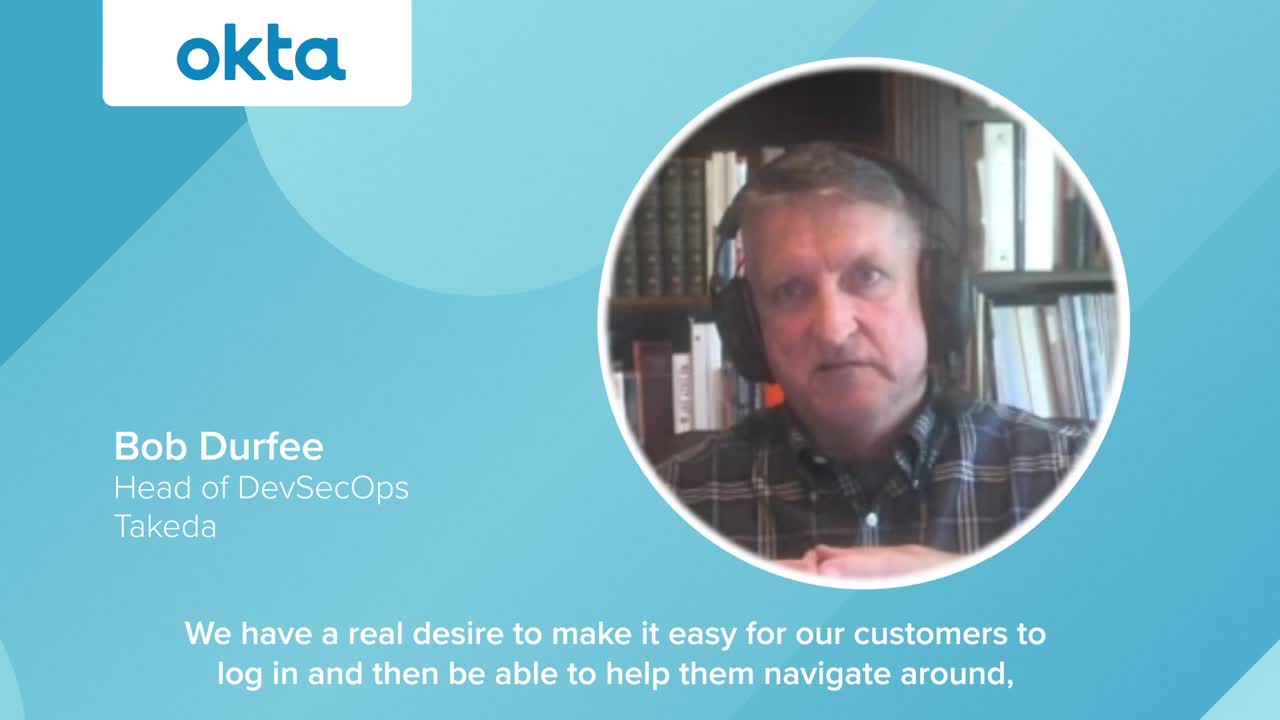How Takeda Broke Down Silos and Built a Better Healthcare Experience
The pharmaceutical industry is changing. Customers want easier access to pharmaceutical data, increased control over their own healthcare, and the knowledge that their sensitive medical information is protected by the strongest security possible. It’s a big ask, but thanks to a significant digital transformation with a keen focus on identity, Takeda is providing customers with everything they’ve been looking for.
In 2019, the company started offering more personalized services to its customers. Takeda wanted to create data-driven digital services that could either stand alone or enrich and inform in-person healthcare and sales interactions. To pull this off, however, the company needed to centralize its IT environment. After searching for a proven identity partner that could support these goals, Takeda purchased a range of Okta Customer Identity products, including Authentication, Authorization, Adaptive Multi-Factor Authentication, and Lifecycle Management.
“We have a real desire to make it easy for our customers to log in and navigate around our various sites," says Bob Durfee, Head of DevSecOps for Takeda. “But identity is the crux of how people interact with our organization. For us, the best way to establish a digital relationship with our customers was to consolidate customer identity across all platforms.”
Holistic identity services
In addition to centralizing its IT environment, Takeda also consolidated multiple customer identities into a single Takeda ID. This reduced friction by letting customers access multiple applications in a single session, and increased Takeda’s visibility and data analysis capabilities. Now, sales reps can review previous digital customer interactions through Takeda’s CRM, and use that information to provide more personalized information at their next in-person meeting.
Better yet, setting up a Takeda ID is so simple that IT doesn’t even have to get involved, saving Takeda time and money, and reducing complexity for everyone else. Customers can either self-service and do it themselves, or a sales rep can do it for them. Okta Lifecycle Management makes it just as easy for Takeda to completely remove a customer from the platform upon request.
“We wanted to create trust and maintain Takeda's reputation in the digital world, so we needed to set up our provisioning and deprovisioning processes in a compliant way, once and for all,” says Benedikt Niepoetter, Business Services Consultant at ARCONDIS AG. “We knew if we did it right the first time, we wouldn’t have to do it again and again for every application. And that really helped.”
Brand perfection
With multiple brands operating under the Takeda umbrella, it was important to take branding into consideration throughout the consolidation initiative. With Okta, Takeda was able to keep company sites connected closely enough to allow for seamless navigation, while enabling individual companies to wrap their sites in the correct branding.
“If you suddenly have Okta popping in, or something turns up in Takeda colors, it's just not seamless,” says Niepoetter. “We didn't want to have that disruption in the experience. Each Takeda company has the option of customizing the branding for all their applications and websites.”
Strong, flexible security
Security is critical in the pharmaceutical industry, so Takeda built in strong, layered protection into its environment from the very beginning. The company took a Zero Trust approach that makes no assumptions about a customer until their identity has been confirmed and their access privileges have been verified.
Takeda also screens for red flag access requests, including impossible travel scenarios. For example, if a user logs in from Atlanta and then, an hour later, logs in from Los Angeles, Okta prompts IT to investigate.
The complexity really depends on the case,” says Niepoetter. “If we're handling patient data, there's probably a need for Multi-Factor Authentication, but if it's just a gated website for doctors, it's not that sensitive. In the future, we’ll be able to securely authenticate IoT devices as well, which will really broaden the possibilities for improving healthcare.”
A passwordless future
After centralization, Takeda is now one step closer to eliminating passwords altogether. Okta Multi-Factor Authentication includes a number of factors that don’t rely on traditional credentials, and once customers are able to log in to their Takeda ID with a few easy clicks, their user experience will be even more seamless.
“When we can start using passwordless technologies, it's going to be a game changer,” says Durfee. “We’re just getting into it now by piloting an Okta tool called FastPass, so we can see how that pans out for us. But ideally, passwordless authentication is where we're going.”
Secure, seamless customer experiences
“When the pandemic arrived, we saw how easy it can be to work digitally, but we also saw how important physical interactions can be when it comes to really getting to know people,” says Niepoetter. “It showed us that while digital channels are accepted, you really need an omnichannel approach to serve all of your customers’ needs and create a real connection.”
Ready to learn more about how Takeda rebuilt its identity infrastructure in order to provide a seamless, personalized healthcare experience? Check out Takeda’s customer video for all of this and more!


